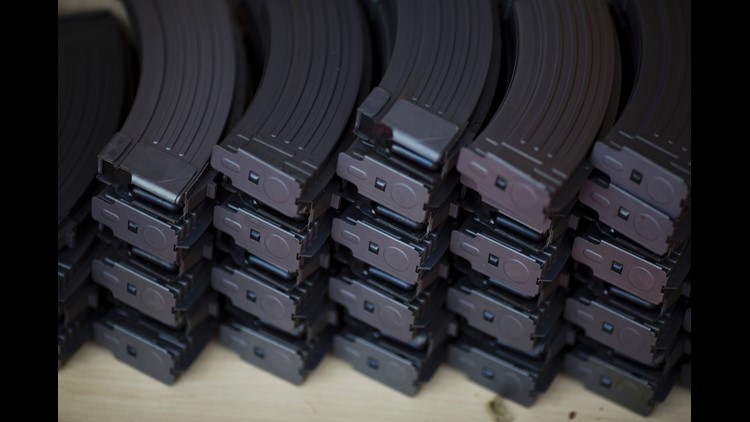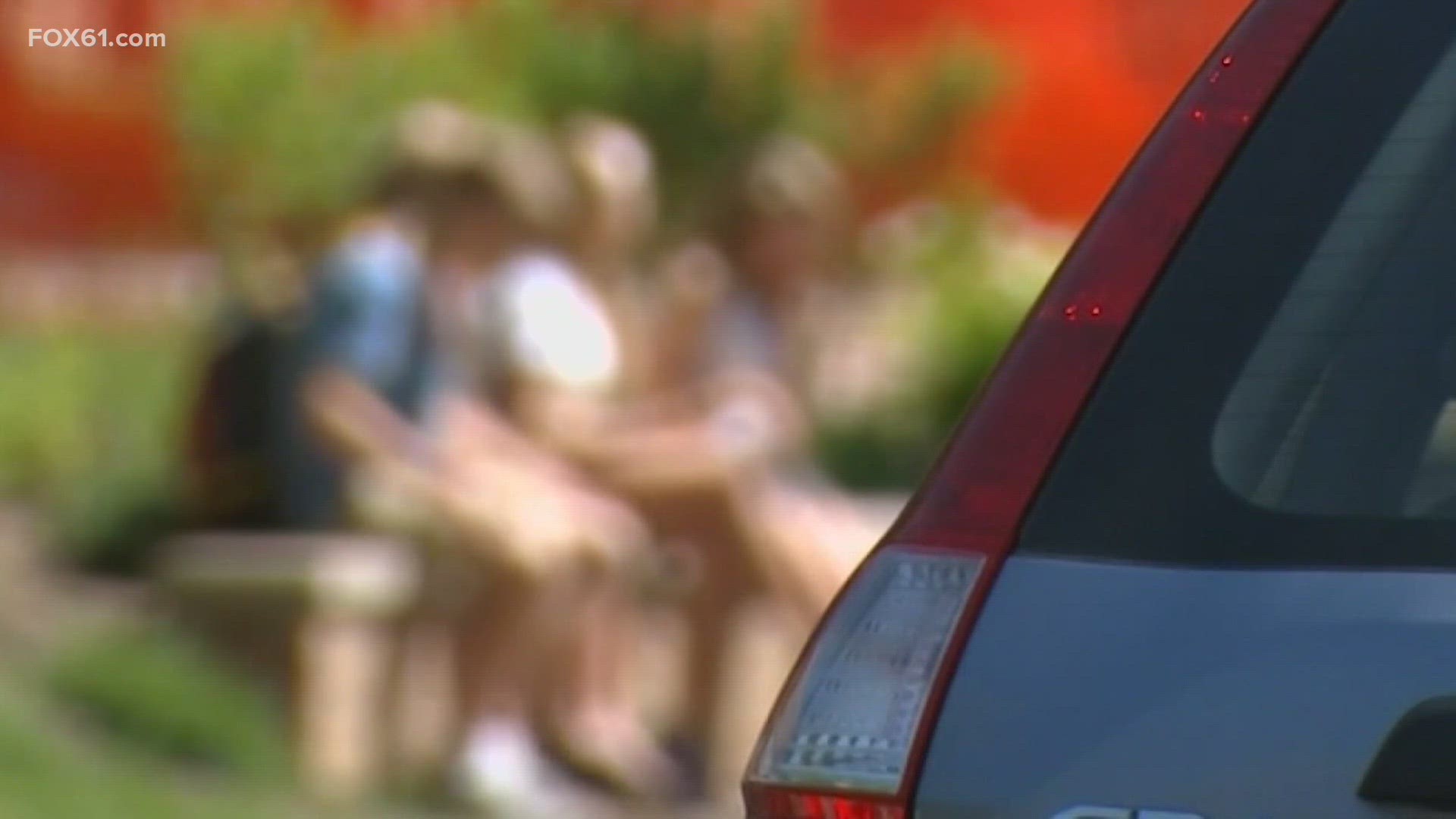An analysis performed for CNN found that states that have enacted magazine restrictions are associated with fewer mass shooting events.
“Whether a state has a large capacity ammunition magazine ban is the single best predictor of the mass shooting rate in that state, ” said Michael Siegel, a community health science professor at Boston University, who conducted the analysis. These states are associated with a 63% lower rate of mass shootings, according to his analysis.
These bans, which are present in eight states, reduce the maximum total number of rounds that can be shot before reloading to 10 or 15. One state, Hawaii, only restricts the magazine size of handguns. The analysis was completed over the other seven states: California, Connecticut, Colorado, Maryland, Massachusetts, New Jersey and New York between 2012 and 2016.
Siegel’s analysis only found a correlation, and is not a causal explanation. He looked at many possible socio-demographic factors and gun laws that could be associated with mass shootings, controlling for population and gun prevalence. Magazine laws were far and away the strongest. The states that have banned large-capacity magazines still struggle with enforcement, and the effects of their policies are largely unknown.
Siegel’s analysis, which is not published but was performed for CNN, is based on the same methodology as past peer-reviewed research he published. The data is from Stanford’s Mass Shooting database, which looks at events with three or more victims (not necessarily fatalities), not including the shooter. Other databases have different definitions for what qualifies as a mass shooting.
A separate study released Monday in the Journal of Urban Health found high-capacity magazines have been used in over 40% of the murders of police in recent years, according to a new, comprehensive report on crimes involving semi-automatic weapons. The report was co-authored by the lead investigator of the congressionally-mandated assessment of the 1994 federal assault weapons ban.
High-capacity magazines, such as those found in the Las Vegas shooter’s hotel room, raise the number of bullets that a firearm can shoot before reloading. The increase can vary, but is often from 10 bullets to 30. In the case of the Nevada shooting, the firearms used in the shooting had magazines that could carry upwards of 100 bullets. The Las Vegas shooter appears to have modified at least one of his semi-automatic weapons to operate more like an automatic weapon. Bump fire stocks, such as the one the Las Vegas shooter apparently used, simulate automatic fire, but don’t actually alter the firearm and so are legal under current federal law.
The study did not specifically examine such bump fire stocks, but rather weapons using large-capacity magazines, which have increased as weapons used in crime.
“High-capacity semi-automatics have grown from 33% to 112% as a share of crime guns since the expiration of the federal ban — a trend that has coincided with recent growth in shootings nationwide,” the authors write.
These weapons also tend to be used in the deadliest shootings. William Johnson, one of the report’s co-authors and a doctoral student at George Mason University, told CNN that one of the report’s biggest takeaways is that that as crimes get more severe, the type of weapons involved tend to be capable of killing more people.
“As firearms are used in more lethal situations — when they’re using against law enforcement or used in mass shootings — they’re more likely to have a large-capacity magazine or to be an assault weapon,” he said.
Looking at specific cities, the report’s authors found that 49% more guns used in crimes in Baltimore used large-capacity magazines in recent years than after the ban lapsed. In Richmond, Virginia, the increase was 112%. Nationally, the rate increased 34% in murders of police. Crime guns are guns that are illegally possessed, used in a crime or suspected to have been used in a crime.
Johnson said his co-authors’ analysis supports the argument made by advocates of restrictions on large-capacity magazines that they allow mass shooters to be more effective at killing people.
“Where you see the effect of the large-capacity magazine is the actual number of victims you’re seeing from these shootings, especially mass shootings,” he said. “The shooter might have multiple assault weapons with large-capacity magazines, and the amount of damage that shooter can do increases when they have that combination and the ability to fire large amounts of ammunition without having to reload.”
These arguments were put out after many mass shootings, in particular after Sandy Hook and the shooting of Rep. Gabrielle Giffords in Tucson, Arizona in 2011. Giffords’ shooter had a high-capacity magazine clip that held at least 30 rounds. When he stopped to reload, he was tackled and stopped. Had he needed to stop shooting earlier, advocates argue, there may have been fewer victims.
Critics counter that if magazine sizes are reduced, mass shooters will just use more weapons or reload. They also say the magazines are needed for self defense.
Experts in public health and gun violence say that while more research is needed, the data thus far suggests that high-capacity magazine regulations have the potential to be an effective deterrent to these types of violent events. But the issue is how you enforce such a ban, since tens of millions of large-capacity magazines are out in the country already.
This issue plagued the 1994 assault weapons ban, which allowed existing magazines to remain in circulation and had loopholes that allowed some high-capacity magazines to still be sold. Any new regulation would face the same enforcement issues.
Still, even without rounding up every magazine, regulations on large-capacity magazines could still potentially be effective at limiting these firearms’ availability and affect crime rates.
Christopher Koper, the lead author of the study and the lead investigator of the congressionally-mandated assessments of the 1994 federal assault weapons ban, told CNN via email: “If it has a grandfathering provision that allows people to keep their pre-ban magazines (as did the federal ban), then effects may take longer to unfold. But even laws with grandfathering provisions can help to prevent further spread of this weaponry.”
The public has generally supported proposals for banning high-capacity magazines since at least the late 1990s.
A CNN poll from from June 2016 found that 54% of respondents supported banning firearm clips that allow guns to be shot more than 10 times before reloading.
Garen Wintemute, an emergency medicine physician and director of the Violence Prevention Research Program at the University of California, Davis, said that California still lags in its enforcement efforts on limiting large-capacity magazine possession. They will need to go much further, he says, to achieve meaningful effects.
“In a state where magazines are banned, the state might say we’re going to establish an amnesty period during which we very strongly encourage people to turn in these magazines,” he said. “And that will be that.”



